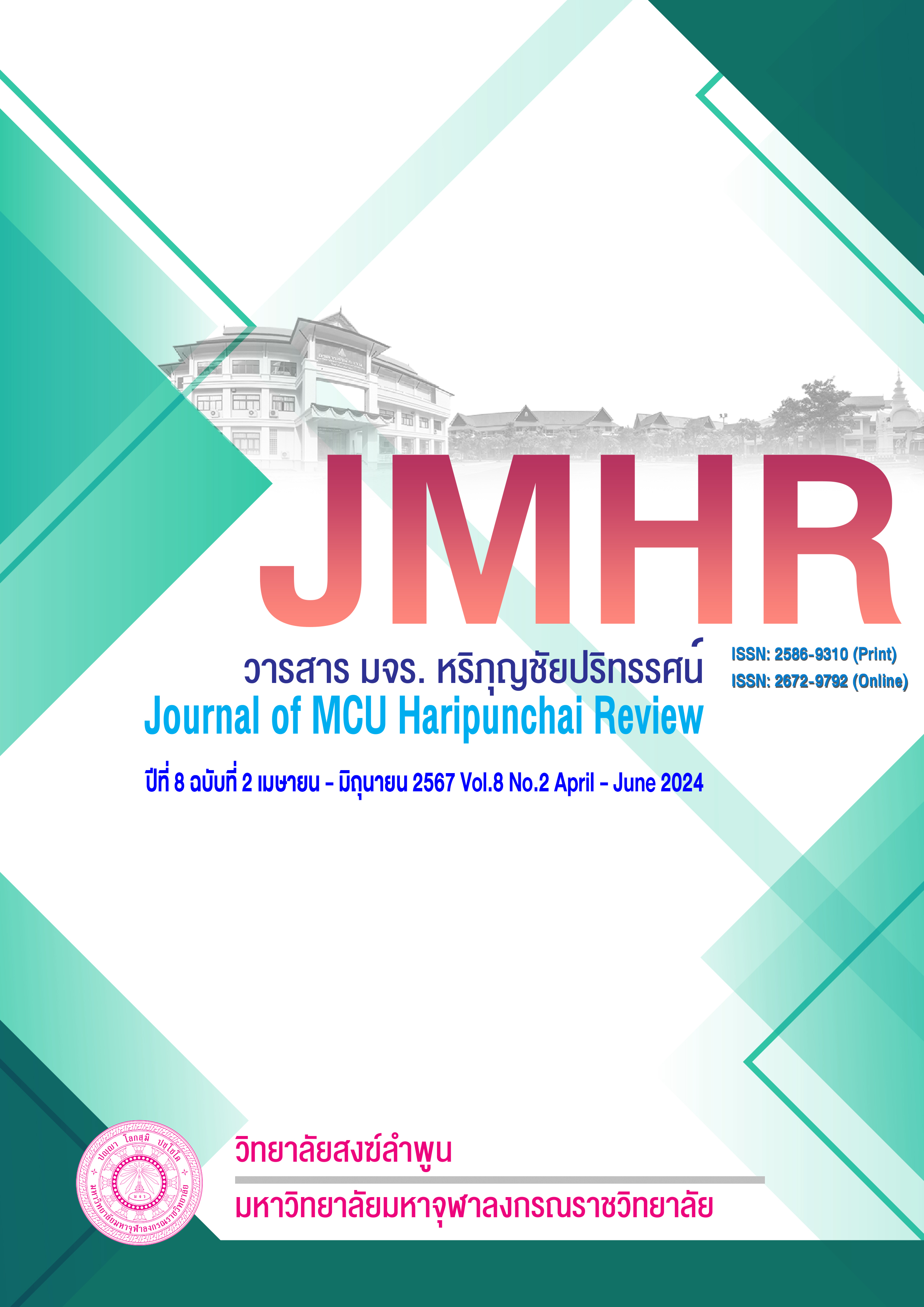Buddhism innovation E-learning English media for the Vipassana meditation retreat in new normal society
Main Article Content
Abstract
The objectives of this research article are 1) to study the principles of Vipassana meditation according to the principles The four foundations of mindfulness 2) Develop the principles for practicing Vipassana meditation according to the four foundations of mindfulness into an English format. 3) Develop an innovative Buddhist knowledge set using English e-learning media for practicing meditation according to the four foundations of mindfulness. The Four Foundations of Satipatthana and 4) Publish a set of innovative Buddhist knowledge on e-learning media in English for the practice of Vipassana meditation according to the Four Foundations of Satipatthana. It is qualitative research. and workshop Use in-depth interviews with 20 key informants or people to conduct inductive analysis. action research The experimental group was used. Undergraduate students of Mahachulalongkornrajavidyalaya University Lamphun Sangha College, 15 monks/person
The research results found that
- Principles of Vipassana meditation practice based on the four principles of mindfulness. It was found that the beginning stage of practice It specifies 4 postures, which are the main postures, namely standing, walking, sitting, and lying down mindfully. Before practicing Vipassana, the mind should be calmed by practicing Samatha meditation first.
- The development of the principles of Vipassana meditation and the four mindfulness principles into an English format was found to be at a high level overall.
- The development of innovative Buddhist knowledge sets using English e-learning media for the practice of Vipassana meditation according to the four principles of mindfulness was found to be at a high level overall. Satisfied with the teaching format on the website Overall it is at a high level.
- Dissemination of innovative Buddhist knowledge sets, e-learning media in English for the practice of Vipassana meditation, the four principles of mindfulness. It was found that it was disseminated through meditation teaching activities. and the practice of Vipassana meditation at Lamphun Sangha College and disseminate knowledge through online media
Article Details

This work is licensed under a Creative Commons Attribution-NonCommercial-NoDerivatives 4.0 International License.
References
กรมควบคุมโรค กระทรวงสาธารณสุข. (2564). “แนวทางปฏิบัติเพื่อการป้องกันโรคติดเชื้อไวรัสโคโรนา 2019 (COVID-19) สำหรับประชาชนทั่วไปและกลุ่มเสี่ยง”. [ออนไลน์]. แหล่งที่มา : https://ddc.moph.go.th/[9 มิถุนายน 2565].
ฉกาจ ชลายุทธ. (2563). “ผลของ COVID 19 ที่เปลี่ยน 6 เรื่องหลักพฤติกรรมสังคมโลก”, CREATIVE TALK, [ออนไลน์]. แหล่งที่มา : https://creativetalklive.com/after-covid19/[22 พฤศจิกายน 2563].
พนิดา หนูทวี. (2560). ความต้องการในการใช้งาน e-learning ในการเรียนการสอนของนักศึกษาและอาจารย์ระดับมหาวิทยาลัย. วารสารวิชาการมหาวิทยาลัยธนบุรี. ปีที่ 11 ฉบับที่ 24 (มกราคม –เมษายน): 33.
พระมหาปราโมทย์ วิริยธมฺโม,ดร., (2559). “การปฏิบัติและการสอบอารมณ์กรรมฐานตามหลักพระพุทธศาสนาเถรวาทในประเทศสมาชิกอาเซียน”. รายงานการวิจัย. มหาวิทยาลัยมหาจุฬาลงกรณราชวิทยาลัย วิทยาเขตบาฬีศึกษาพุทธโฆส.
พระเสริมพร แก้วมะ และศรัณย์ ธิติลักษณ์. (2560). “ผลของการปฏิบัติสมาธิที่มีต่อบทบาทภาวะผู้นำ กรณีศึกษา : ผู้เรียนหลักสูตรครูสมาธิ สถาบันพลังจิตตานุภาพ”. การประชุมวิชาการระดับชาติ มหาวิทยาลัยรังสิต ประจำปี 2560 (28 เมษายน 2560).
มหาวิทยาลัยมหาจุฬาลงกรณราชวิทยาลัย. (2539). พระไตรปิฎกภาษาไทย ฉบับมหาจุฬาลงกรณราชวิทยาลัย 2539. กรุงเทพมหานคร : โรงพิมพ์มหาจุฬาลงกรณรา


